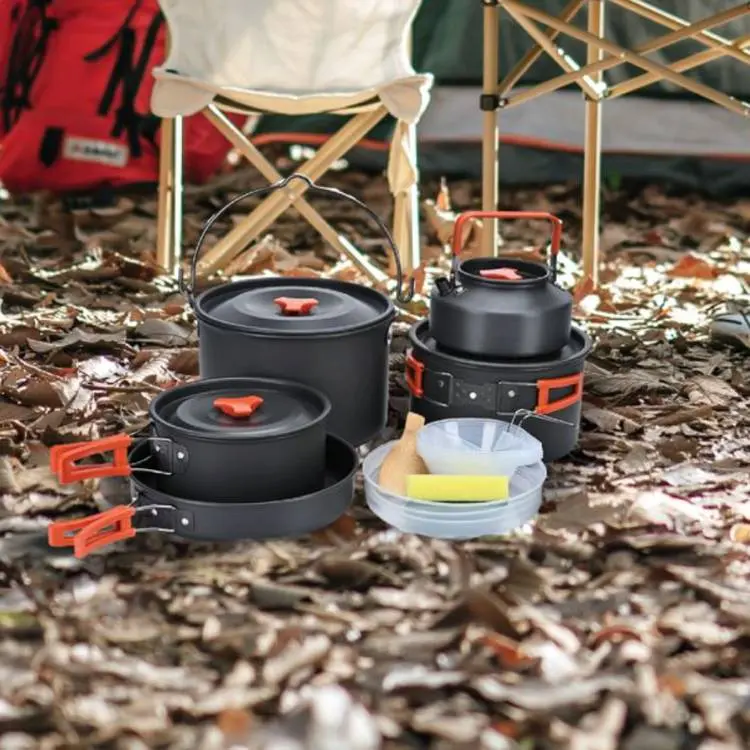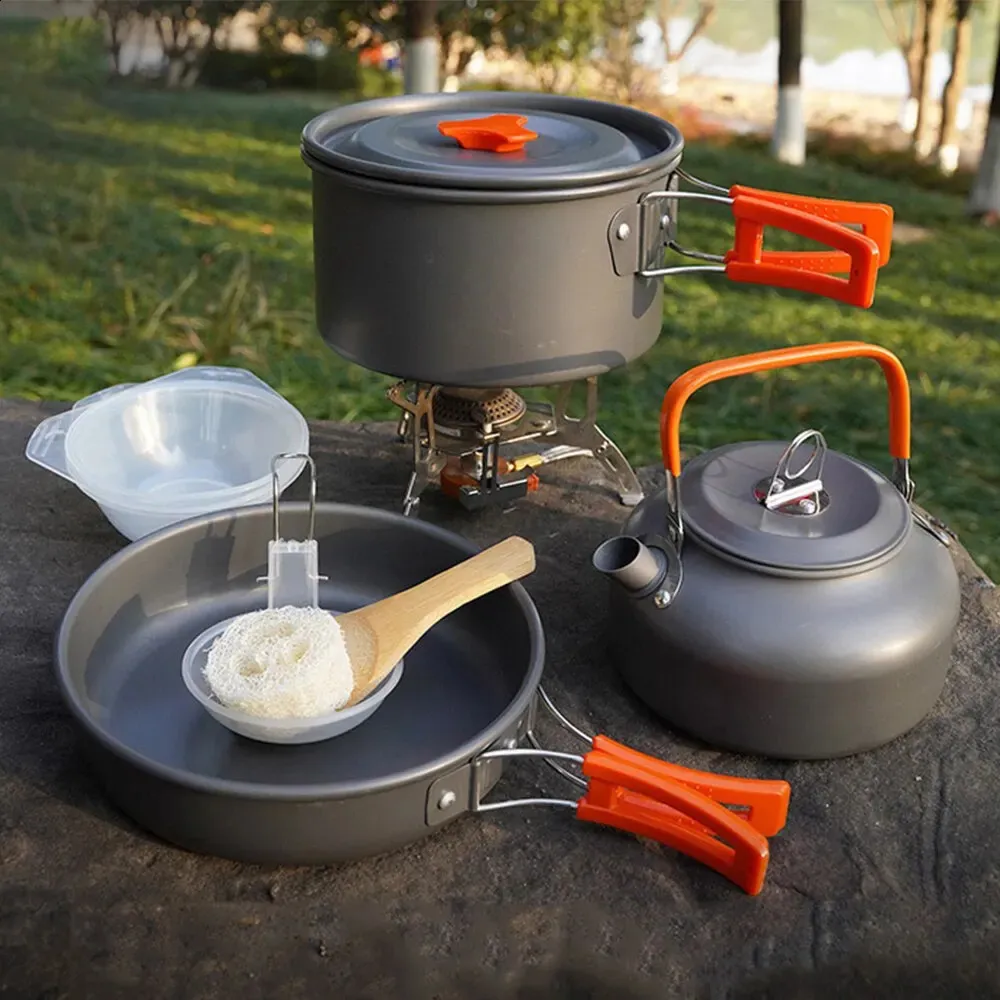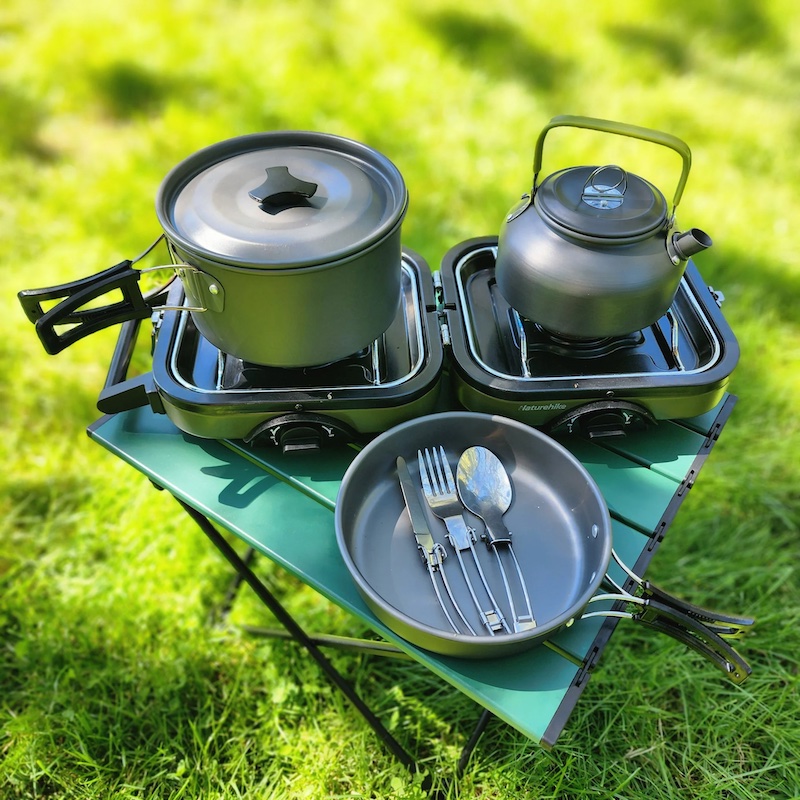Introduction
Camping cookware comes in a variety of shapes, sizes, and materials to suit the different needs of campers. From lightweight and compact options for backpackers to larger and more durable sets for car campers, there is a wide range of camping cookware available on the market.
Camping is a great way to get away from the hustle and bustle of daily life and immerse yourself in nature. Cooking while camping can be a fun and satisfying experience, but having the right cookware is essential for preparing meals outdoors. In this guide, we will explore the different types of camping cookware and provide tips for choosing the best options for your outdoor adventures.
Part 1: Essential Camping Cookware
One popular material for camping cookware is aluminum, which is lightweight, durable, and conducts heat well. Aluminum pots and pans are often non-stick, making them easy to clean and maintain. Additionally, aluminum cookware is often affordable, making it a popular choice for budget-conscious campers.
Another common material for camping cookware is stainless steel. Stainless steel pots and pans are durable, corrosion-resistant, and easy to clean. While they may be heavier than aluminum cookware, they are often more versatile and can be used over an open flame, making them a popular choice for campers who prefer to cook over a campfire.
Level 1: The Basics
When it comes to camping cookware, there are a few essential items that every outdoor enthusiast should have. These include a portable stove or campfire, a cooking pot, a frying pan, utensils, and a water container. These basic items will allow you to prepare a wide variety of meals while camping.
Level 2: Lightweight and Compact Options
For those looking to minimize the weight and bulk of their camping cookware, there are plenty of lightweight and compact options available. For example, you can find camping stoves that fold up to the size of a small book, as well as nesting cookware sets that stack neatly inside each other to save space in your backpack.
Part 2: Types of Camping Stoves
Portable stoves are an essential piece of camping cookware, providing a convenient and efficient way to cook food while camping. These stoves can be powered by propane, butane, or other fuel sources and come in various styles, such as compact backpacking stoves or larger freestanding models.
Pots and pans designed for camping are typically made from lightweight and durable materials such as aluminum, titanium, or stainless steel. These materials are chosen for their ability to distribute heat evenly and resist corrosion. Many camping pots and pans are also designed with folding or removable handles to save space when packing.
Level 1: Gas Stoves
Gas stoves are a popular choice for campers due to their ease of use and reliability. They run on propane or butane fuel canisters and come in a variety of sizes and styles. Some gas stoves even have built-in igniters for added convenience.
Level 2: Backpacking Stoves
For backpackers and minimalist campers, backpacking stoves are the ideal choice. These stoves are ultralight and compact, making them easy to transport in a backpack. They typically run on small canisters of fuel and are designed for boiling water and simple cooking tasks.
Part 3: Cookware Materials
Camping cookware can also include items for food storage and preparation, such as coolers, cutting boards, and utensils. These items help to ensure that campers can enjoy delicious and satisfying meals while spending time in the great outdoors.
Level 1: Aluminum
Aluminum cookware is lightweight, affordable, and conducts heat well. However, it can react with acidic foods and is not suitable for long-term use over high heat.
Level 2: Stainless Steel
Stainless steel cookware is durable, easy to clean, and resistant to corrosion. It is a popular choice for camping cookware due to its robust nature and ability to withstand high heat.
Part 4: Specialized Cooking Equipment
Level 1: Cast Iron Dutch Ovens
Cast iron Dutch ovens are a favorite among campers for their versatility and ability to cook a wide range of meals. They are excellent for slow cooking, baking, and roasting, and can be used over an open fire or on a camp stove.
Level 2: Portable Grills
For campers who enjoy grilling, portable grills are a convenient option for cooking up burgers, hot dogs, and other grilled fare. These grills are compact and lightweight, making them ideal for outdoor cooking adventures.
Part 5: Tips for Choosing Camping Cookware
Level 1: Consider Your Cooking Style
Before purchasing camping cookware, consider the types of meals you plan to prepare and your preferred cooking methods. This will help you choose the right equipment for your needs.
Level 2: Durability and Maintenance
When selecting camping cookware, prioritize durability and ease of maintenance. Look for cookware that is built to last and can withstand the rigors of outdoor use. Additionally, consider how easy the cookware is to clean and maintain in the field.
Part 6: Portable Stoves
Level 1: Types of Portable Stoves
- Propane Stove: Uses small, portable propane canisters for fuel and provides consistent heat for cooking.
- Backpacking Stove: Compact and lightweight, these stoves are designed for outdoor adventures and use fuel tablets or alcohol as a heat source.
Level 2: Considerations for Choosing a Portable Stove
- Fuel Type: Consider the availability of fuel and the weight of the canisters or tablets for longer trips.
- Heat Output: Make sure the stove can generate enough heat for the type of cooking you plan to do, whether it’s boiling water or simmering a stew.
Part 7: Cookware Material
Level 1: Common Cookware Materials
- Aluminum: Lightweight and affordable, but can react with acidic foods and is not as durable as other materials.
- Stainless Steel: Durable and easy to clean, but heavier than other materials and can have uneven heat distribution.
Level 2: Choosing the Right Material for Your Needs
- Backpacking: Lightweight materials like titanium or aluminum are popular choices for backpacking cookware.
- Car Camping: Stainless steel or cast iron cookware is a good option for car camping due to their durability and even heating properties.
Part 8: Cleaning and Maintenance
Level 1: Cleaning Cookware in the Outdoors
- Use biodegradable soap and hot water to clean your cookware after each use.
- Avoid using harsh scrubbers that can damage the surface of your cookware.
Level 2: Long-term Maintenance
- Properly store your cookware to prevent damage during transportation.
- Regularly check for rust or damage and address any issues promptly to extend the life of your camping cookware.
Conclusion
In addition to pots and pans, camping cookware sets often include other necessities such as plates, bowls, and utensils, all of which are designed to be lightweight and compact for easy packing and transport. When shopping for camping cookware, it’s important to consider the specific needs of your camping trip, including the number of people in your group, the type of cooking you plan to do, and the methods of cooking you’ll be using. With the right cookware, you can enjoy delicious meals and snacks while exploring the great outdoors.
Investing in quality camping cookware can greatly enhance your outdoor cooking experience. By choosing the right equipment for your needs and preferences, you can enjoy delicious meals while immersing yourself in the beauty of nature. Whether you prefer lightweight and compact options or heavy-duty cookware that can handle any culinary challenge, there are plenty of choices available to suit your camping style. Happy cooking and happy camping!



